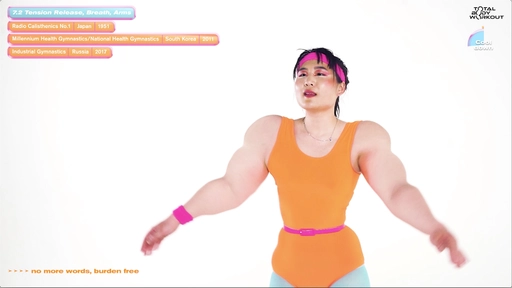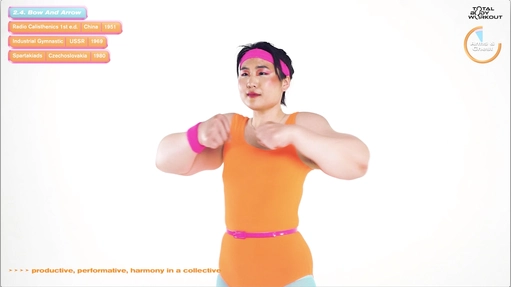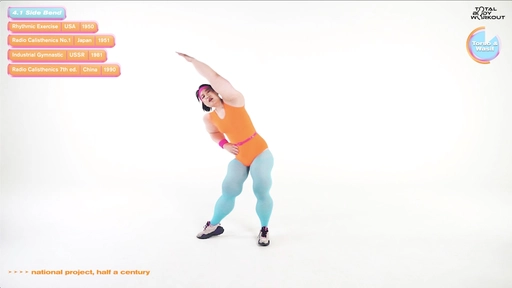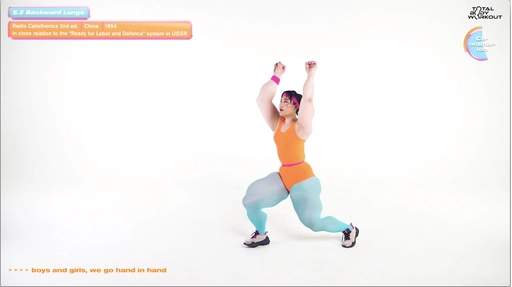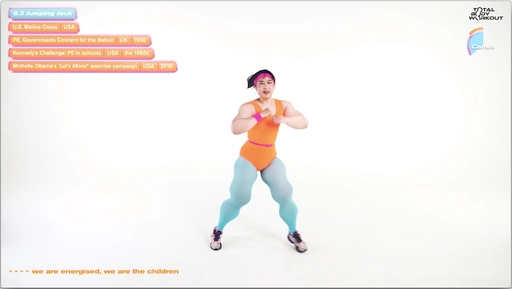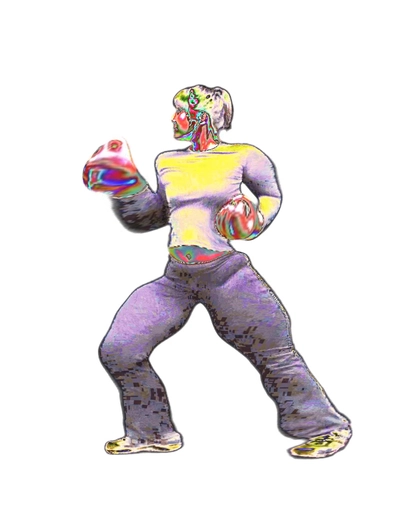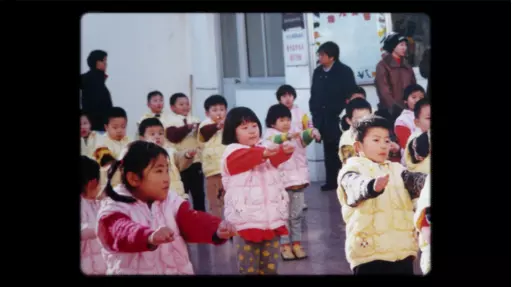
In this video essay The Timeless Morphs: 3 Body sessions, Kexin Hao takes us through her memories of growing up in Beijing, and her experience of alienation that resulted from the pressure to perform in dance and athletics. Folding the images and sounds of her memories into (collective) histories of the moving body, she asks: What is a disciplined and an undisciplined body? Weaving the personal family footage together with archival material, she looks into how the body is disciplined, and how it escapes disciplining measures through movement and memory. By recounting her memory of others and her own, this video essay speaks on how remembering creates a space for deviation, humor, entertainment, and power. This contribution includes an interview with the artist on her work and the uses of embodied research and writing methods. Kexin Hao is a visual artist and designer.
To remember, is to position oneself sound and still in the great flood of history. To remember yourself, is to ask others not to forget.
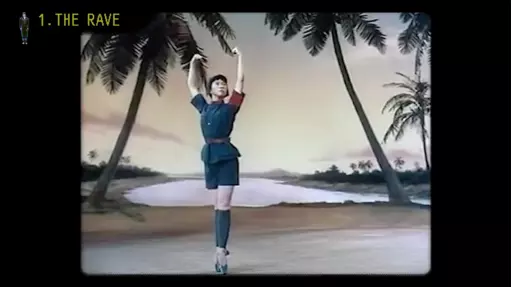
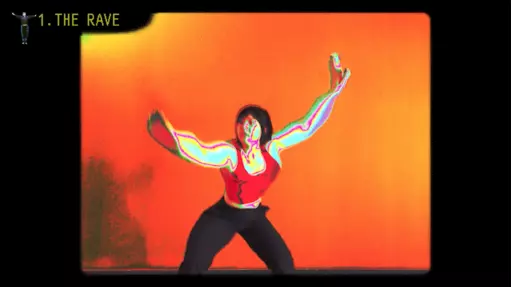
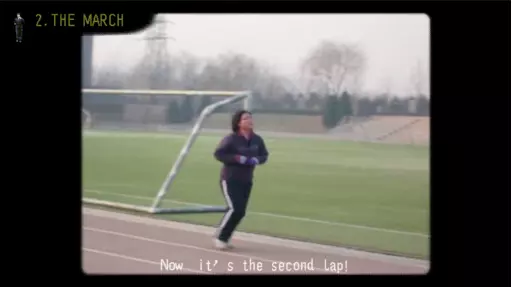

Kexin’s voice and moving body take us back through a ballet performance of the story of Wu Qionghua, a peasant girl who flees enslavement to join the red army-led women’s detachment in Hainan province to fight the nationalist troop in China in the 1930s. The work then takes us to the athletic march of the opening ceremonies of the 1964 Tokyo Olympics, the same stadium where 21 years back, in 1943, Prime Minister Tōjō Hideki had addressed the soldiers in training, encouraging them to destroy the American and British enemies. And finally to radio calisthenics, the Japanese wartime project that was nationalized in Japan but also in China, Korea, Indonesia and Vietnam as a way to regulate the national body to convey nationalist ideology. By recounting the memories of others and her own, this visual essay speaks on how remembering creates a space for deviation, humor, entertainment, imagination, and power.
We spoke to Kexin about her practice, and her daring visual language that fuses graphic design and performance art. In this conversation, she speaks on embodied research and writing, and how she works along with collective narratives that are imbued with “political heaviness” and “flashy modernity” through humor and sarcasm.
We spoke to Kexin about her practice, and her daring visual language that fuses graphic design and performance art. In this conversation, she speaks on embodied research and writing, and how she works along with collective narratives that are imbued with “political heaviness” and “flashy modernity” through humor and sarcasm.
How do you study movement and embodiment through (visual) research and through writing?
I use visual research to observe dance as if I am in a space in which dance is happening. I use writing to analyze dance. Besides these two methods, I also dance myself as part of my research. When I was researching the subject of mass gymnastic routines, I practiced the 11 editions of radio calisthenics of China, through which I felt closer to its history. In this process, I traveled through this history with my own physical body.
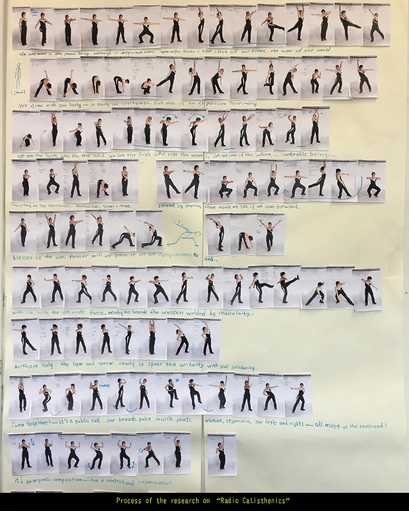
You speak in the visual essay about body movement as an obsession, as a way to control and of being controlled, but also as an emancipatory tool. How do you deal with the friction between control, obsession and emancipation in your work?
Choreographing the body is about control, regulation, measurement, and sometimes a way through which a national ideology can be materialised. To move and dance is also to empower, and to register the individual body in history. I try to convey this message through my work, not in a clear-cut voice or in making a clear distinction between the control and empowerment, but in a way that everything is mixed, patched, and intertwined.
I would not have been able to tackle and dive into this whole history of radio calisthenics without my attached sentiments. My attachment has grown out of the bitterness of discipline, sweetness of joy, and the sourness of nostalgia. I look at and imagine historical archives and other moving bodies, for example the ballerina Wang Huifen and Sonoko at the stadium, with all these feelings and mixed-up flavours. I feel very connected to the bodies of others by knowing that they have similar complexities as I do, in one’s feelings and attachment to historical events. This is one of the main reasons I make the works I do.
I would not have been able to tackle and dive into this whole history of radio calisthenics without my attached sentiments. My attachment has grown out of the bitterness of discipline, sweetness of joy, and the sourness of nostalgia. I look at and imagine historical archives and other moving bodies, for example the ballerina Wang Huifen and Sonoko at the stadium, with all these feelings and mixed-up flavours. I feel very connected to the bodies of others by knowing that they have similar complexities as I do, in one’s feelings and attachment to historical events. This is one of the main reasons I make the works I do.
Through staging and making you have been able to morph your body in ways that are not possible in ‘real’ life. How are your capacities expanded in the context of a visual practice—which in part is archival, embodied, and speculative? Can you speak on the limits and potentials of the various media you engage and how they respond to or strengthen one another?
When making a video work of the performance, I treat the moving image of my own body always as raw material to modify and to play with. This treatment (the liquified and morphing body) is one of the visual languages I use, not only to visually enlarge the arms and chest, but also to expand the body as a host for meanings and aesthetics, as a medium that materializes ideologies. This body goes beyond the limits of my own body, becoming an icon that renders the performative body, the historical body, the archival body, and my own body together into one.
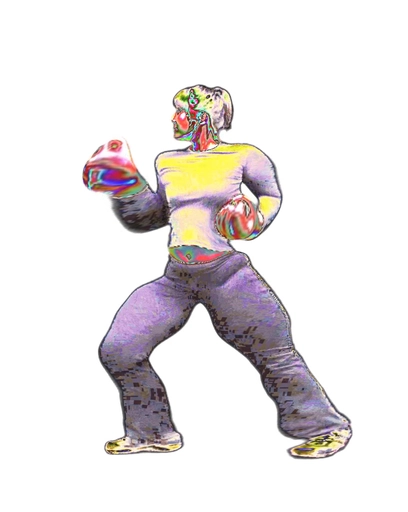
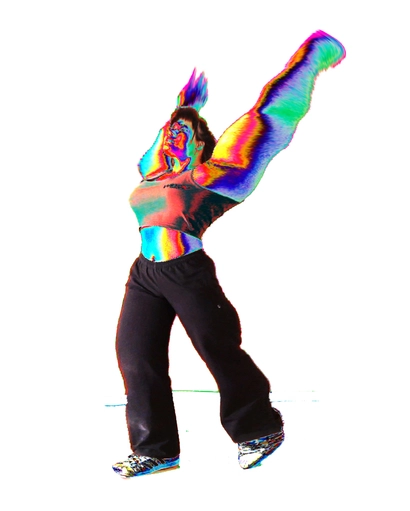
You stage a lot of your work, including your body and its choreographed movements. Could you speak on the skill sets of and approaches in graphic design, and how they have shaped the way you deal with staging? How has it shaped the way you show and perform, scan and categorize, decode and recode?
The most frequent question we are asked in the graphic design department at KABK is: What is the visual treatment, and why?
Due to this focus on the visual approach and on post production, staging and the performance becomes something beyond simply being in front of the camera. In my graduation work Total Body Workout and in this video essay, I treat the graphics of my body in a way that distorts and morphs my body. The idea is to appropriate the aesthetic and obsession of “making a strong body” from the propaganda imagery of the last century. This was the initial idea, and it is sarcastic. Combined with singing, clubbing beats and aerobic outfits, this visual strategy has brought in a lot more effects. It is psychedelic, humorous and entertaining.
Due to this focus on the visual approach and on post production, staging and the performance becomes something beyond simply being in front of the camera. In my graduation work Total Body Workout and in this video essay, I treat the graphics of my body in a way that distorts and morphs my body. The idea is to appropriate the aesthetic and obsession of “making a strong body” from the propaganda imagery of the last century. This was the initial idea, and it is sarcastic. Combined with singing, clubbing beats and aerobic outfits, this visual strategy has brought in a lot more effects. It is psychedelic, humorous and entertaining.
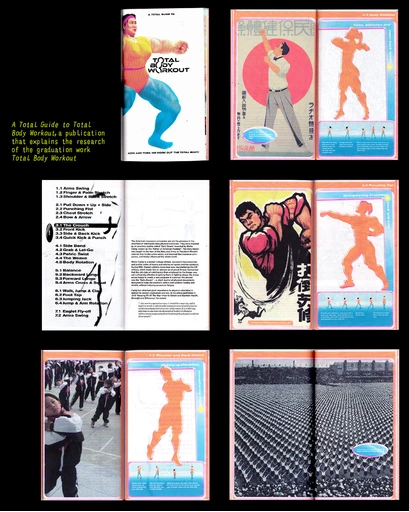
Here you can see the process of making the morphing animation of 'Total Body Workout'.
Can you speak on the relation, and perhaps the difference, between the work you do on the stage, and the work you do in the space and time of (narrating and making) a video?
I like to make my work participatory. It is fun when the audience can not only watch but also join. But I like the stage to remain as a stage, where the performer always faces the audience and performs in front. I really like this dynamic: performing in front of an audience while at the same time mobilizing them to move together. This is exactly the same power dynamic in the courtyard where we practiced radio calisthenics following the PE (physical education) teacher on stage, as well as in the sweaty and flashy aerobic classes back in the days: the performers are observed and speculated upon, as they are leading and synchronizing the crowd.
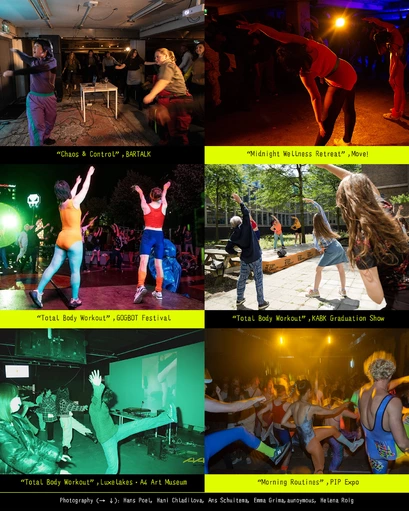
So you emulate this power dynamic, and embody this tension in staging it as a performance. What I like about it is that you take on that which was heavy and serious, and make it fun and humorous. That’s how I understand your sarcasm and the power of this work. How do you care for the ways in which you as a maker are in the position of seeing bodies (as you are editing), but you are not seen by others? How do you alternate between seeing and being seen?
Two years ago, during the first lockdown, I was bored at home and wanted to do some alternative home exercises. I played the radio calisthenics I used to do when I was in middle school. There was a ten-year-break after I stopped doing it when I left middle school. When I play the music now, all my body memories wake up in me. I remember how to move, and even smell the plastic grass of the courtyard. My whole research started at that moment, when I realised I needed to somehow ‘register’ this body memory of mine and of others, which eventually led me to all these works.
Several hundreds of millions of people growing up in the same decade inhabit a collective body that holds the same body memory. In my research, I revisit other people’s body memory by talking to them. I also read books and interviews of people talking about their body memory. I figured out that individual experiences are barely visible compared to the hegemonic history and its imagery. Yet these experiences are integral to our history. I feel the urgency in making them visible through my visual research, and by patching individual experiences, collective bodies and hegemonic histories together.
Several hundreds of millions of people growing up in the same decade inhabit a collective body that holds the same body memory. In my research, I revisit other people’s body memory by talking to them. I also read books and interviews of people talking about their body memory. I figured out that individual experiences are barely visible compared to the hegemonic history and its imagery. Yet these experiences are integral to our history. I feel the urgency in making them visible through my visual research, and by patching individual experiences, collective bodies and hegemonic histories together.
refered to from:
people – 23 mrt. 2022
